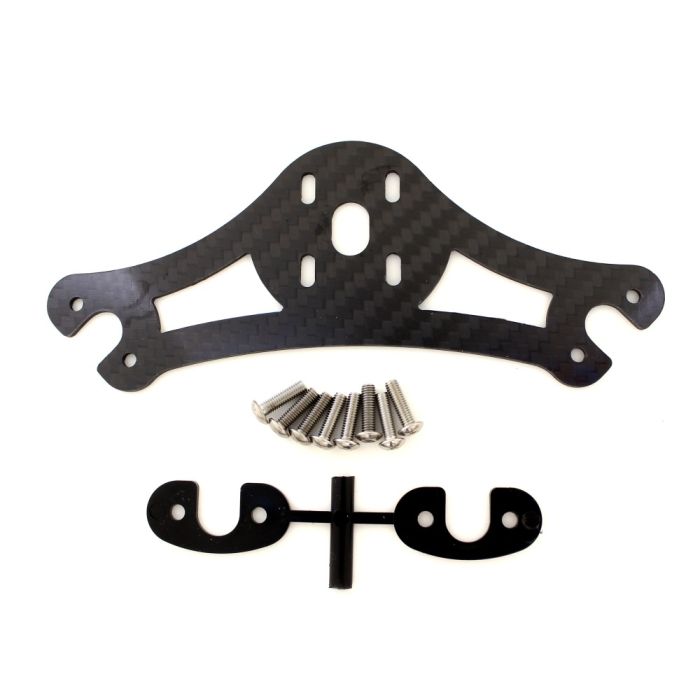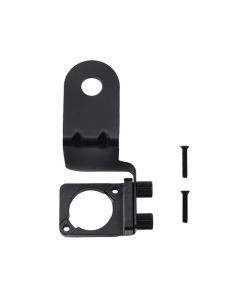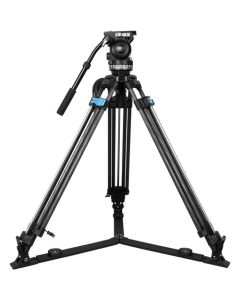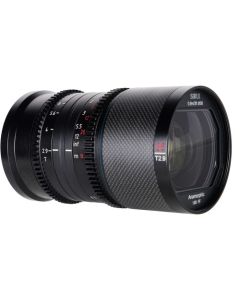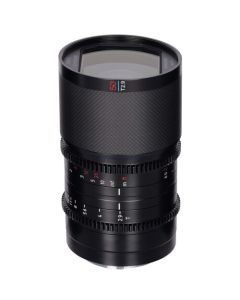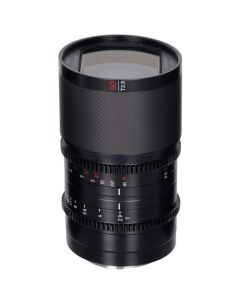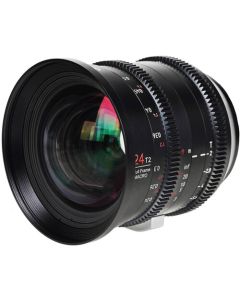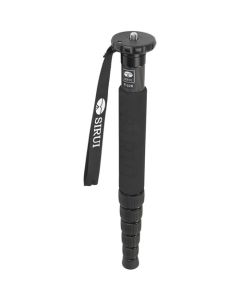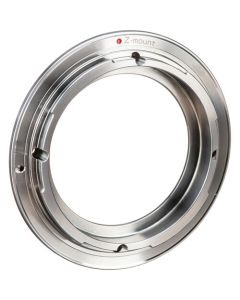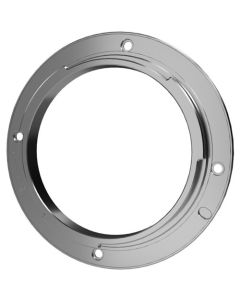MARS MINI Phantom 1&2 Mount
by MarsHigh Strength, Light Weight Carbon Fiber Construction, Designed Specifically for the DJI Phantom V1 & V2, Easy To Install, All hardware Included, Weight: .32oz (9grams)
- Plaćanje na rate Plaćajte na rate Visa, Visa Premium, Maestro, MasterCard i Diners kreditnim karticama. Naknada je 5% na objavljenu cijenu a zaračunava se u košarici prilikom odabira plaćanja. Više detalja provjerite na linku Načini plaćanja.
- Brza dostava Za sve narudžbe unutar RH zaprimljene do 14h dostava će biti izvršena sljedećeg radnog dana*. Za cijelu Europu vršimo brzu dostavu, a više detalja provjerite na linku Načini dostave.
- Međunarodna kupnja EU tvrtke(osim RH) s valjanim VAT ID brojem plaćaju cijenu bez PDV-a. Cijena će se obračunati prilikom check out-a. Svi kupci izvan EU plaćaju izvoznu cijenu bez PDV-a.
Sadržaj pakiranja
- 1 x MARS Carbon Fiber Phantom Mount Upgrade Unit
- 1 x Hardware Package
With the all new MARS MINI Phantom Mount Upgrade, you now have the ability to add ballistic parachute capability to your Phantom aircraft, adding a whole new level of safety, sanity and peace of mind when flying your Phantom.
Easy to install and designed to be used with the
MARS MINI V2 parachute system (sold separately)
the Phantom Mount Upgrade is a simple carbon fiber attachment point that allows the MARS MINI V2 parachute system to cleanly and effectively mount to your DJI Phantom.
This system can be utilized with the stock DJI transmitter (full details below), can be paired with an 8+ channel aftermarket transmitter of your choice for maximum capability, or for the very best in parachute deployment, the all new “Mayday” auto deployment system – details below.
Coalesced with the MARS MINI V2 parachute system, your Phantom has an all new capability of returning to earth safely. Whether it be a motor, prop or other type of failure that may take place, you no longer need to risk your expensive investment to the ground below, allowing your aircraft to be safely recovered at the flip of a switch.
For true levels of sanity, the MARS Phantom Mount Upgrade kit is the perfect solution to bring your investment home safe & sound, allowing you to relax and enjoy the flight in the way it was supposed to be enjoyed.
Protect your investment with ballistic parachute technology, adding true reliability & safety to one of the most capable multi rotors on the market today.
Usage & Installation Information:
Usage of the MARS MINI parachute system with the DJI Phantom series requires an aftermarket transmitter with (8)+ channel capability for full Phantom capability. The stock DJI transmitter can be utilized (details & instructions below), but the gimbal tilt function will no longer be available, as this will be the control method to deploy the parachute system.
With the use of a 8+ channel aftermarket transmitter system, you can utilize both the gimbal tilt capability and the parachute deployment system, along with all manners of other capabilities that the stock DJI transmitter system simply cannot offer. This is the recommended system when it comes to manual parachute deployment.
For those that do not want to utilize an aftermarket transmitter system, or those that do not want to lose the tilt function via the stock DJI transmitter, be sure to check out the “Mayday” auto deployment system – details below.
How Do I Pair My Phantom To An Aftermarket Transmitter?
This is very simple, and even more, there are dozens of YouTube videos that can walk you through the process in a matter of a few minutes.
In short, the process involves removing your Phantom shell, removing the stock DJI receiver system, and installing the receiver system of your choice. With this option, you will use male to male servo connectors to connect the NAZA flight controller to your aftermarket receiver, and after some simple transmitter programming, you can now utilize your aftermarket transmitter to control the key features of your Phantom, such as Fail Safe, Course Lock, Home Lock, GPS Mode, ATTI Mode, Return to Home, and best of all, deployment of your MARS MINI parachute system.
Why Use An Aftermarket Transmitter Versus the Stock DJI Transmitter?
Many reasons. An aftermarket transmitter will provide you with a much greater level of functionality, programmability, and better range as well. The stock DJI transmitter is very basic, and lacks many of the capabilities that aftermarket transmitters have to offer, such as multiple switch settings, telemetry options, custom programs, and ways to tailor the aircraft to suit your flying style.
In short, an aftermarket transmitter opens up much more capability than the low cost, stock DJI transmitter system ever could, allowing you to take advantage of greater levels of aircraft capability & functionality, such as the use of a MARS parachute system.
How Does the Parachute System Activate?
When using an aftermarket transmitter, you will plug the servo actuated parachute system into an auxiliary / gear channel. Once completed, this channel will be assigned to the switch of choice via your aftermarket transmitter, and once set, you can easily activate the parachute system at the flip of a switch. You can even go as far as applying a custom mix to cut your throttle the moment the parachute system is engaged, allowing a perfect parachute deployment scenario.
What Is the Auto Deployment System?
Partnered with MARS, North UAV has developed the “Mayday” auto deployment system that will work with all MARS parachute systems offered. This high tech device utilizes a host of sensors to detect a fall that is indicative of an aircraft failure, and rather than relying on the pilot to manually deploy the parachute system via a transmitter switch, the “Mayday” system auto deploys the parachute system autonomously with no needed input from the user.
This system not only adds an all new layer of safety to your aircraft by reacting instantly when an aircraft failure occurs, but also allows independent parachute deployment that cancels out the need for aftermarket transmitters, stock transmitter modifications, or any other issues involving your transmitter of choice.
Simple & straight forward, the “Mayday” auto deployment system is the very best option when it comes to the MARS parachute system, allowing you to simply fly without the slightest worry of a crash or failure.
What Props Do I Need To Use?
The latter generation of Phantom kits (Phantom 2 and beyond) utilize 9.4″ propellers versus earlier 8″ propellers found on earlier generation of Phantom kits. With the MARS parachute system installed, 9.4″ propellers need to be replaced with 8″ propellers for proper clearance, so be sure to make this change when using this MARS system.
If you are in need of sticking with the 9.4″ Phantom propellers, we suggest you check out the MARS Series 36 Lite, which offers the ability to keep the stock 9.4″ props by using under slung parachutes.
Usage w/ DJI Phantom Stock Transmitter:
For usage of the MARS MINI parachute system with the stock Phantom transmitter, you can utilize the gimbal tilt lever to activate the parachute system. However, in order to utilize both the camera tilt capability and the parachute system, you will need to utilize an aftermarket 8+ channel transmitter / receiver system.
Instructions for DJI Stock Transmitter System:
#1: If your transmitter does not already have the gimbal tilt slider switch on the back of the transmitter, this optional DJI item will need to be purchased separately and installed in your DJI transmitter.
#2: Open the NAZA assistant and proceed to the “Advanced” section. Select “Gimbal Settings,” and turn the “Gimbal Switch” to the “On” position. Once completed, reduce F2 (pitch) gain to 0.
#3: Remove the hardware of the Phantom shell and expose the NAZA flight control unit. Plug the servo lead of the MARS MINI parachute system into the F2 output of the NAZA flight controller, making sure the MARS MINI servo does not move when the Phantom is tilted fore and aft.
#4: Remove the servo horn from the MARS MINI system and set the Phantom slide switch to one side, and then proceed with mounting the servo horn of the MARS MINI in the center.
#5: Test the tilt lever and make sure that the servo horn via the MARS MINI unit clears the closure door of the parachute, allowing the parachute to be released.
#6: Note that the maximum prop size for the usage of the MARS MINI parachute system is 8.5,” so if you are using anything greater than an 8.5″ prop, you will need to source an 8.5″ prop or smaller for proper clearance of the MARS MINI parachute system.
Note: To manually control the parachute and also shut down the motors when the parachute is activated, the DJI Phantom cutoff type in the NAZA Assistant will need to be set to “Immediate” for proper usage, allowing the parachute to be deployed without the props being intertwined in the spinning propellers.

